The sunrise is now peaking over the horizon, and you’re staring groggily into your opened refrigerator until all of the cold, misty air has escaped. Fridgina, as you affectionately call her, now beeps at you for your negligence, and you beep back to oh so cleverly spite her. She felt it. What are you doing at the fridge again? Oh yeah. Getting some of that rich & creamy, fermented white gold known as yogurt.
The origin of yogurt. The briefest of histories.
The domestication of mammals that produced milk for human consumption was believed to occur as early as 10,000 BC or as late as 5,000 BC. As you might’ve noticed, milk at room temp converts to liquid dank within a few hours. Practically a negative shelf life. Whether coincidence or destiny, Middle Eastern herdsmen happened to store their freshly extracted mammalian milk in pouches created from animal intestines. The various digestive components of the gut lining would sour the milk and create the first known form of yogurt. [Source]
“It is believed that the word “yogurt” comes from the Turkish word ‘yog˘urmak,’ which means to thicken, coagulate, or curdle.”
[Source]
Yogurts are NOT created equal.
Are all yogurts the same? In terms of ingredients? Nutritional value? Taste? Consistency? Absolutely not. You’ve noticed and likely become loyal to either non-fat, low-fat or full-fat yogurt. Some have added sugar, some don’t. Others have added fruit, fruit flavors, natural flavorings, artificial flavors, artificial sweeteners – others are simply plain. Does your “yogurt” contain modified corn starch, gelatin, sugar, potassium sorbate as a preservative, carmine coloring, fructose, citric acid and sucralose? Or just cultured cream, milk and good bacteria?
Plain yogurt contains sugar???
Yep. You read it correctly. Plain yogurt contains sugar. Specifically, lactose sugar. Lactose is the natural milk sugar that the healthy Lactobacillus & Streptococcus bacteria feast on to make your milk coagulate or thicken into yogurt. As they nom these sugars, they produce lactic acid, better known to your mouth as the tang or tartness or bright acidity or sourness associated with all unsweetened yogurt products. Usually about 7 grams of lactose sugar per serving.
Greek vs. non-Greek yogurt.
Perhaps it’s called “Greek” because the oldest written references we have to yogurt are from the Greeks in 100 BC. However, the Middle Easterner herdsman are said to be the discoverers of yogurt in a general sense. No one seems to know who first made Greek yogurt, although the methodology is fairly unanimous. Greek yogurt is simply strained to remove more, most or almost all of the liquid whey protein. This straining results in a thicker, richer, heavier, tangier flavor experience, usually yielding a higher concentration of protein. Made in Greece? Yes, but also made all over the world. The true Greek version would’ve been made with sheep’s milk, and now includes cow’s milk according to Visit Greece. But who was the first to strain it? The question we’ll ponder until Kingdom come.
NYA’s probiotic requirements.
Does all yogurt contain healthy bacteria, or just Activia? Regulated by the National Yogurt Association (NYA), in order to use their “Live & Active Cultures” seal…
“…refrigerated yogurt products must contain at least 100 million cultures per gram at the time of manufacture, and frozen yogurt products must contain 10 million cultures per gram at the time of manufacture.”
Real talk: Activia took control of the probiotic marketing game with an addition of their exclusive strain called Bifidobacterium animalis lactis, with billions of live cultures (actual concentration not disclosed). Although most of the data connecting yogurt consumption and digestive aid isn’t exclusive to any brand or product – as long as the yogurt fits the NYA criteria above.
Which strains are required by the FDA in the making of yogurt? There are two of them: Lactobacillus bulgaricus and Streptococcus thermophiles. However, you’ll usually notice a few more in your standard container’s ingredient list.

Let’s compare nutrition & ingredients!
Chobani non-fat plain greek yogurt.
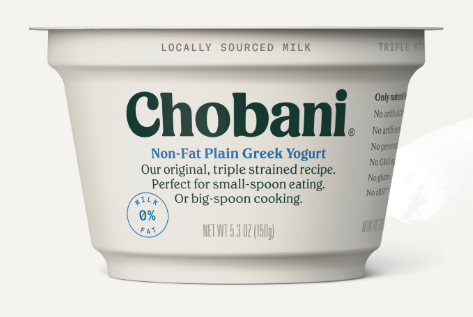
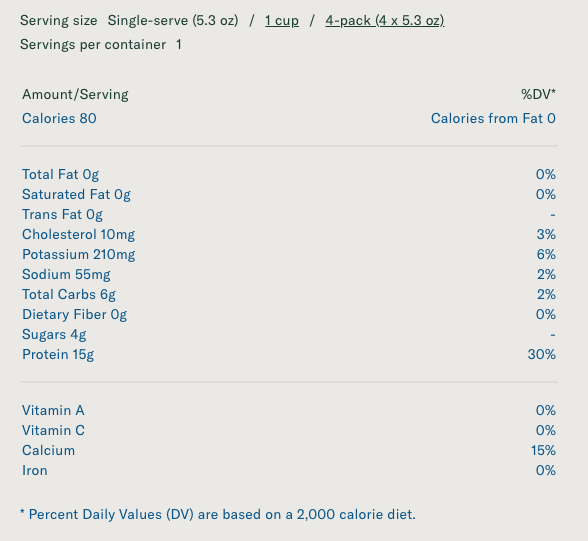

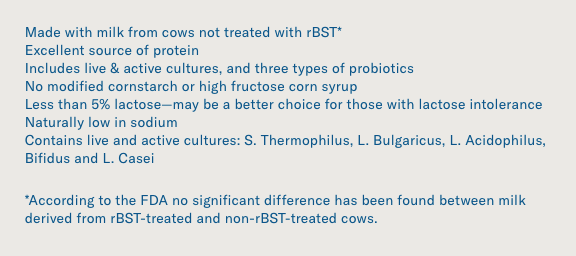
Stonyfield organic double cream, fruit on the bottom, pacific coast strawberry.
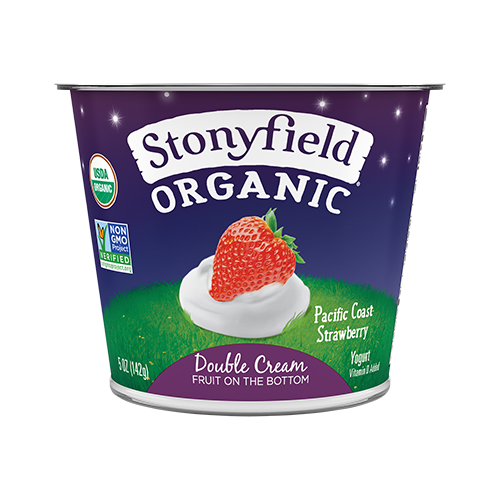
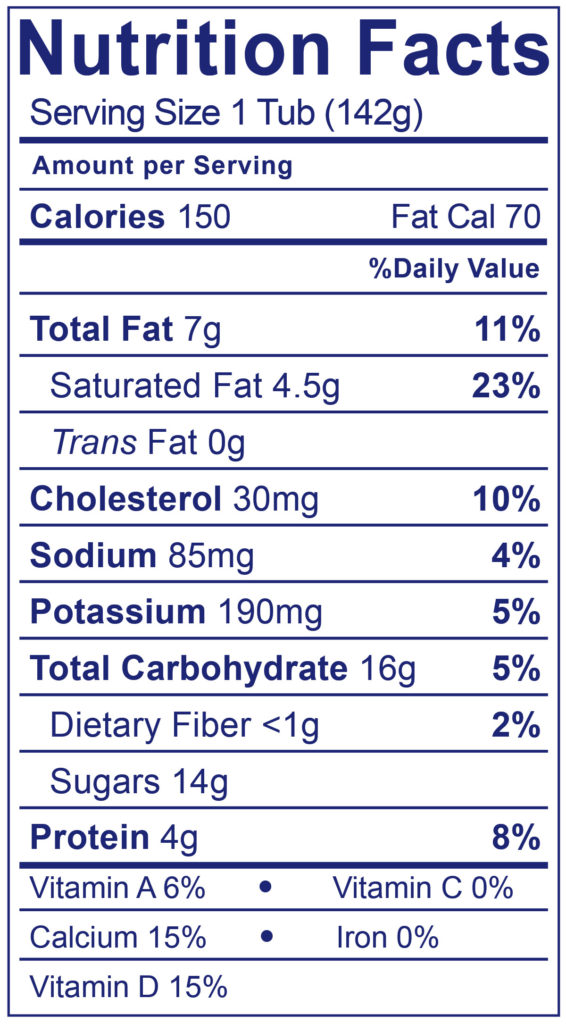


Yoplait simply go-gurt, strawberry.
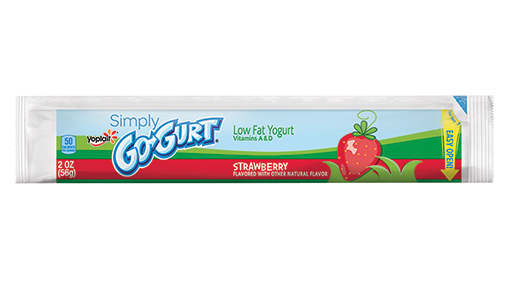
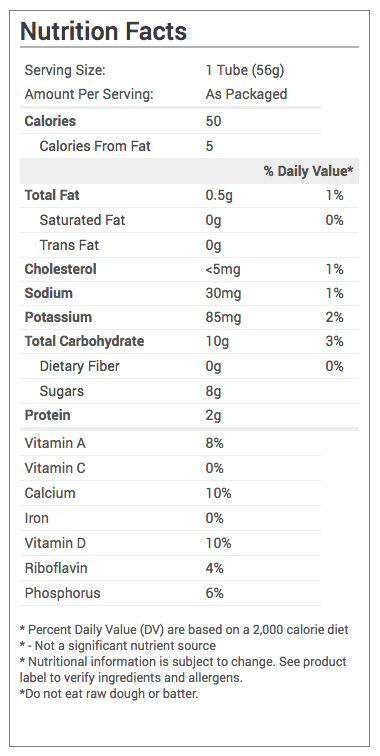

Dannon danimals, strawberry explosion squeezables.
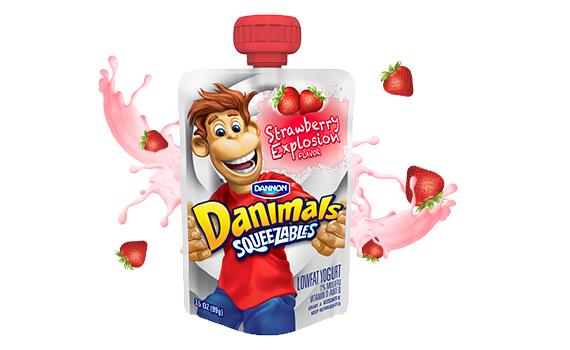
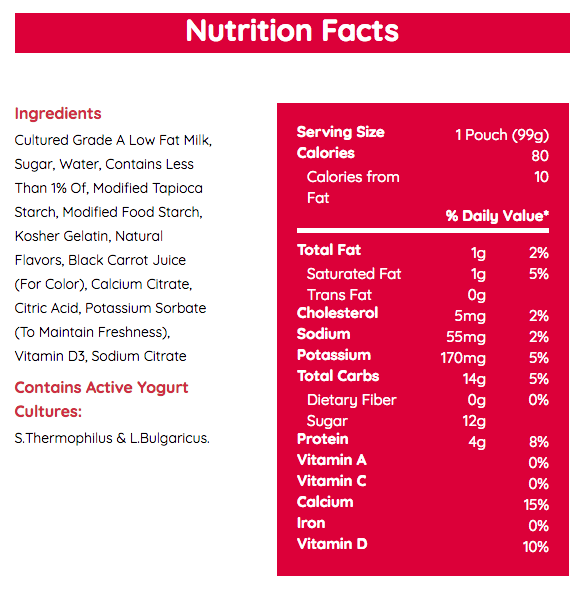

Side by side comparison chart.
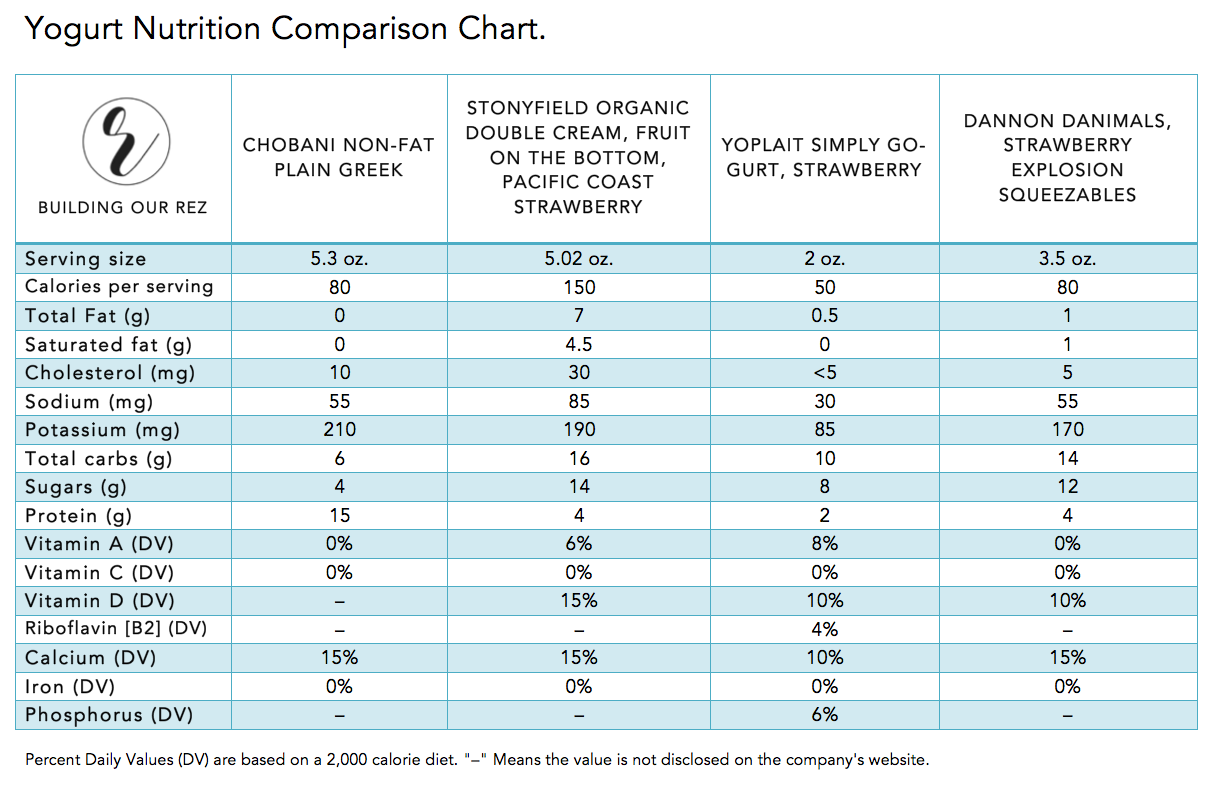
Directly above is the comparison chart of the (4) different brands and types of yogurts we discussed in the “Let’s compare nutrition & ingredients” section. It’s a little hard to decipher, so I highlighted a few values below. In the context of nutrition, green means “good”. Red means “not good”.
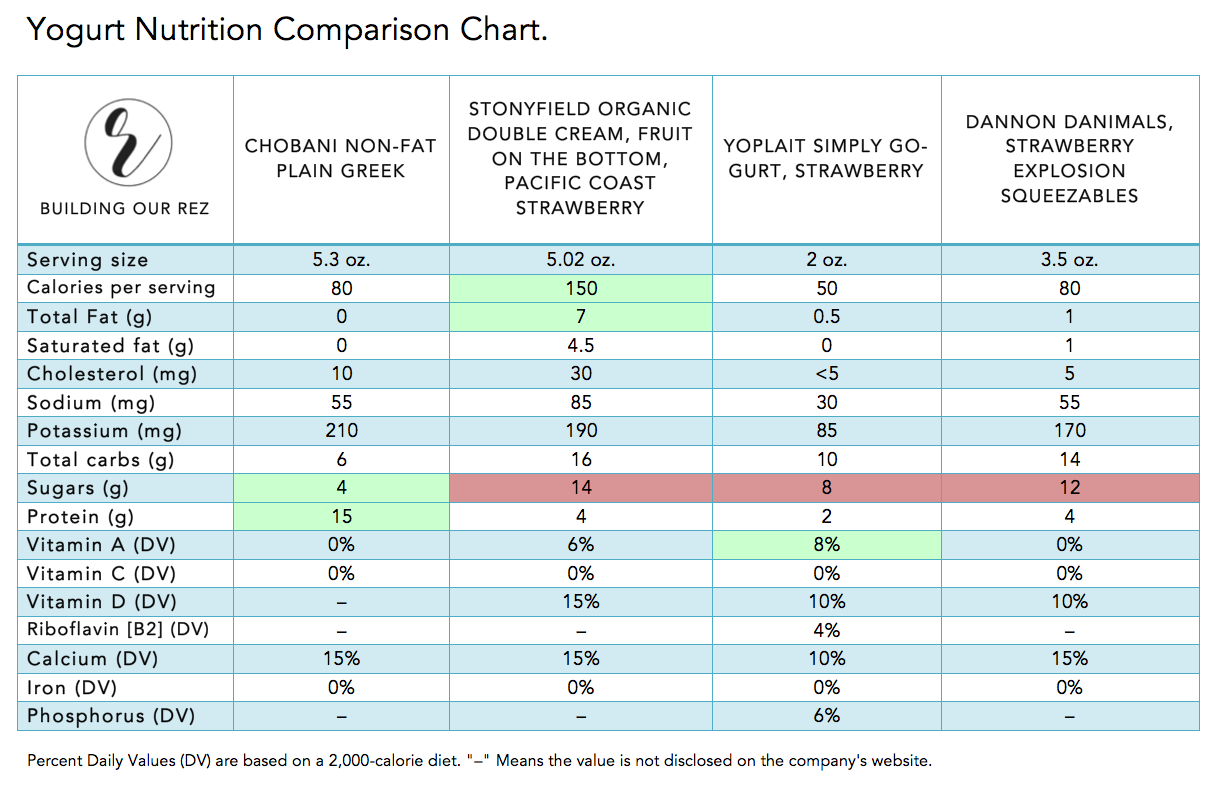
Nutrition analysis.
- Chobani wins the lowest sugar award. Most plain Greek yogurts have 6 or 7 grams of lactose sugar (not added). It also wins the highest protein award. Quite comparable in protein quantity to other brands of plain Greek.
- Stonyfield has the most calories and fat, but I highlighted these values green for “good”. Why? Functionally, yogurt is used as a breakfast item or afternoon snack. 80 calories in the Chobani won’t hold you over as long as the 150 calories in the Stonyfield. What about the fat? Fat keeps you satiated or full longer. Both fiber and fat take your body a long time to digest, preventing blood sugar spikes and hypoglycemic crashes. Protein content is LOW at 4 grams. Here’s the only problem: the strawberries PLUS cane sugar in your Stonyfield bump the sugar content to 14 grams. To compare:
- Chobani’s strawberry flavor touts a grand total of 15 grams of sugar.
- Yoplait’s original strawberry has 18 grams of sugar.
- Dannon’s Oikos nonfat strawberry flavor has 15 grams of sugar.
- Greek gods honey-flavored greek yogurt has 25 grams of sugar.
- Yoplait go-gurt is the smallest serving size at 2 ounces, but packs a sugar punch at 8 grams. A 5 ounce equivalent of go-gurt would have 20 grams of sugar. On the flip side, it contains the most vitamin A by far. Protein content is LOW at 2 grams per serving. A 5 gram equivalent at 5 ounces, but no contest with Chobani’s 15 grams.
- Dannon danimals are also high in sugar for a 3.5 ounce serving, and lower in protein at 4 grams.
Note on vitamins & minerals: by nature of cow’s milk, ALL yogurts should have a solid amount of calcium, phosphorus, riboflavin (vitamin B2) and vitamin B12 [SELF NutritionData]. Not all vitamins and minerals show up on nutrition labels as their disclosure is not required by the FDA.

So… what yogurt is best?
If your goal is satiety (feeling full longer), high protein, and low sugar, then any brand of plain Greek full-fat yogurt should be your go-to. Nearly ALL fruit-added options don’t just add fruit, they add granulated white cane sugar. Non-Greek yogurts are much lower in protein than their Greek alternatives. And most Americans could use a LOT more protein, not sugar.
What’s the best of the best? Making your own Greek yogurt! Here’s how to make it in your oven or toaster oven. And here’s how to make it in your Instant Pot. It’s cheaper, tastes more tart, can be strained to the exact consistency you like, and contains a TON more probiotics with a longer fermentation period.
What yogurt do I feed my kids or toddler?
Here’s the secret to nutrition-loving kiddos: feed them what you eat. If they’ve only ever tasted plain Greek yogurt, then they’ll love plain Greek. If they’ve adjusted their little palates to highly sweetened yogurt concoctions, then you’ll have quite the time trying to switch them to the plain Greek stuff. Unless your clinician or pediatrician recommends low-fat dairy products, offer your children the full-fat options – you may be able to delay the “I’m HUNGRYYY” screams from the back seat with fuller fat and higher protein options.
I know, it’s tough to beat the convenience of a sweetened yogurt pouch or tube. Get creative! Puree your own fresh fruit, mix it with a little water and plain Greek yogurt in a bottle with a lid, and feed to tiny, screaming human. Full disclosure: our 1 year old is crazy about some plain Greek, homemade yogurt. We’re talking the extra tangy stuff. He asks for it on the daily in the verbal Rugrat form of “yoh-gee”. Where’s Angelica when you need her?
Happy Yogurting!
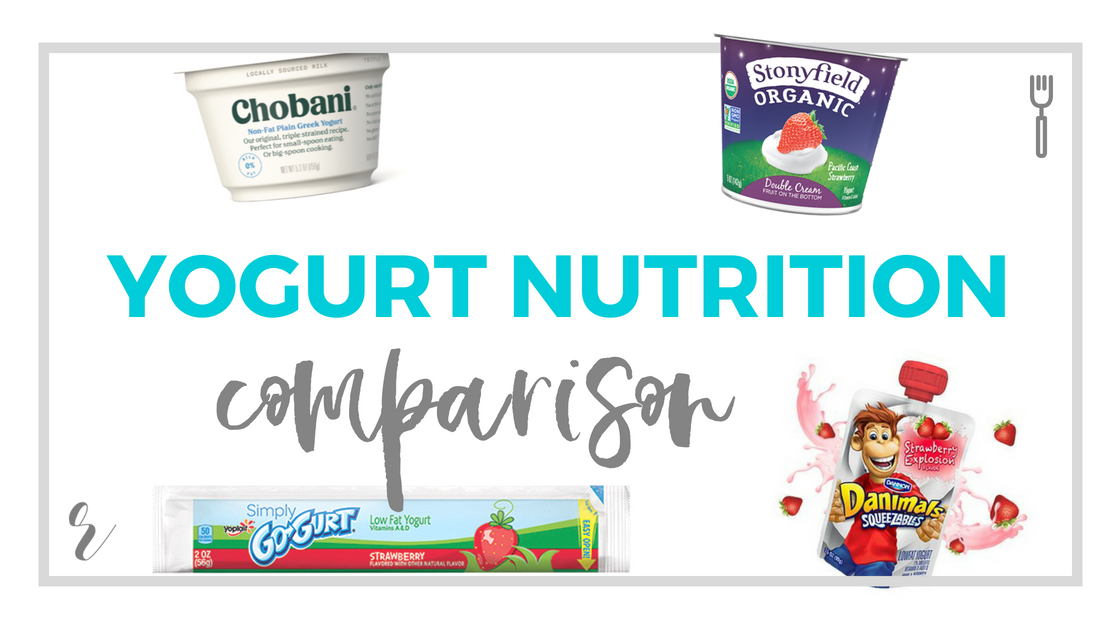



THANK YOU FOR THIS INFORMATION. IT REALLY HELPED ME COMPARE BRANDS. I APPRECIATE THE HIGHLIGHTS AND THE BREAKDOWN.
So glad to hear it, Jessica! Really appreciate the feedback.